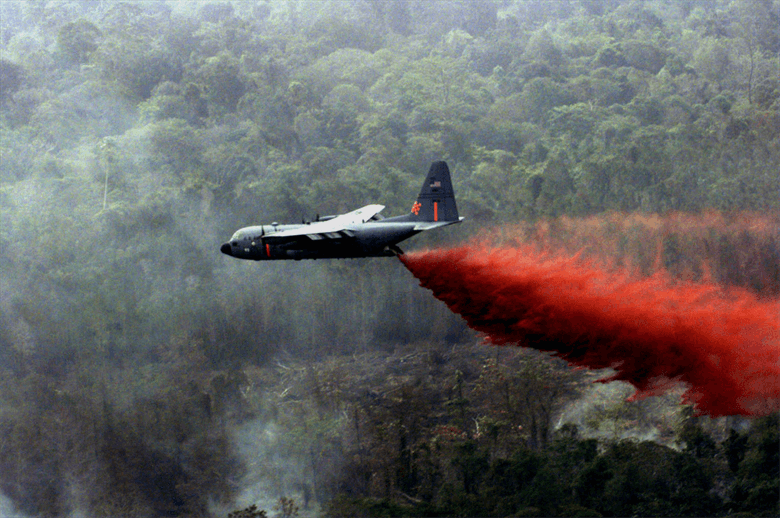The Brazilian president Jair Bolsonaro authorized two C-130 Hercules of the Brazilian Air Force to participate in fighting fires currently ravaging the Amazon forest. However, Bolsonaro refused the help of the G7 countries that offered $20 million to send additional water bombers to the country. Meanwhile, Bolivia, also affected by the Amazon fires, rented a Boeing 747 Supertanker.
When the prevention of forest fires fails, water bombers are the privileged answer to try and contain the catastrophe. Through the air, they can faster than ground crew reach areas that are harder to access ‒ such as dense tropical forests. And speed is very important in such situations, as a water bomber is mainly effective on fire departures and small fires. Its role, in most cases, is not to fight the fire itself but to create a zone that will prevent it from spreading in order to give ground crews the necessary time to intervene. To be as fast as possible, water bombers are assisted by “spotter” planes or can even carry out preventive patrols themselves with their tank full when conditions are favorable for a forest fire.
This year alone, the Brazilian National Institute for Space Research (INPE) recorded 40,000 fire departures in the Amazon and 76,720 over the whole country. This number is at its highest number since 2013. With hundreds of square kilometers at risk, it goes without saying that firefighters need as much help as possible.
Currently, the Military Firefighters Corps (Corpo de Bombeiros Militar) has very limited aerial means. While in some States they are equipped with the Air Tractor 802F and its (meager) capacity of 3,000 liters, some other fire departments have no water bomber. In order to assist them, Bolsonaro has authorized the Brazilian Air Force to convert two C-130 Hercules into water bombers using the Modular Airborne Fire Fighting System (MAFFS) which allows dropping over 11,000 liters in five seconds. 2,500 soldiers were also deployed.
On July 26, 2019, Defense Minister Fernando Azevedo e Silva announced that fires were controlled over the weekend and that the situation had been exaggerated by the press. “We have had peaks of fires in past years much bigger than this year,” Silva said after a meeting with the president. Yet the INPE recorded 1,113 new fire departures the very same weekend.
Later the same day, Bolsonaro refused the help of the G7 countries that had agreed to offer over $20 million to help deploy more water bombers in the region. The country is currently in a diplomatic row with France over the respect of the Paris climate accord.
Super fires require Supertanker
Brazil is not the only country affected by the Amazon fires. Since May 2019, more than 950,000 hectares of forest and grassland were destroyed in Bolivia. The situation prompted the government to rent a Boeing 747 Supertanker from Global Supertanker Services, an American company based in California.
The Supertanker, the biggest aircraft in its category, can carry up to 75,000 liters of fire retardant. As the situation in California currently allows it, the Supertanker was allowed to assist Bolivia. It has been operating mainly in the region of Bolivian Pantanal, the world’s largest tropical wetland. With no rain in the last six months, the area has become dry and thus very flammable. Moreover, swamps would make a ground intervention more difficult.
According to Juan Ramon Quintana, spokesman of the Bolivian presidency, fire departures have decreased from 8,000 to 1,500 since the arrival of the Supertanker. Yet Quintana admits that changing winds could easily revive them.


